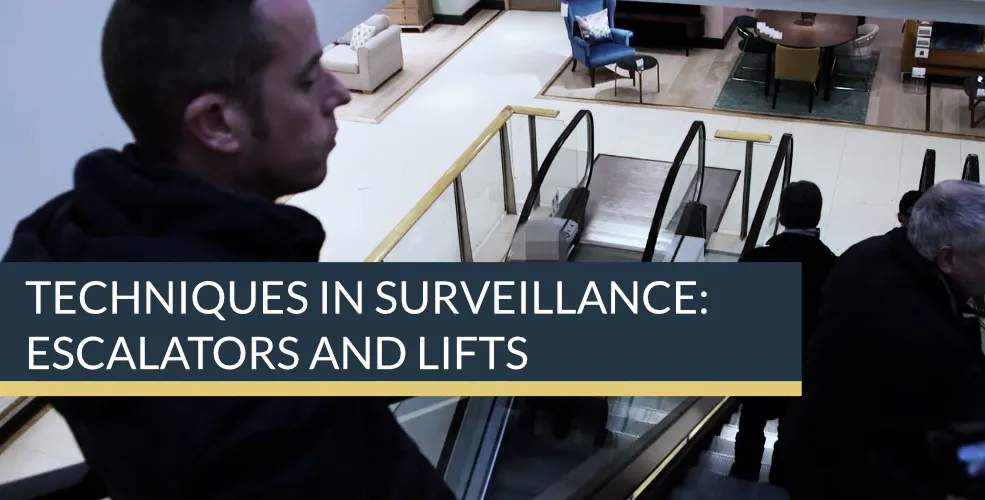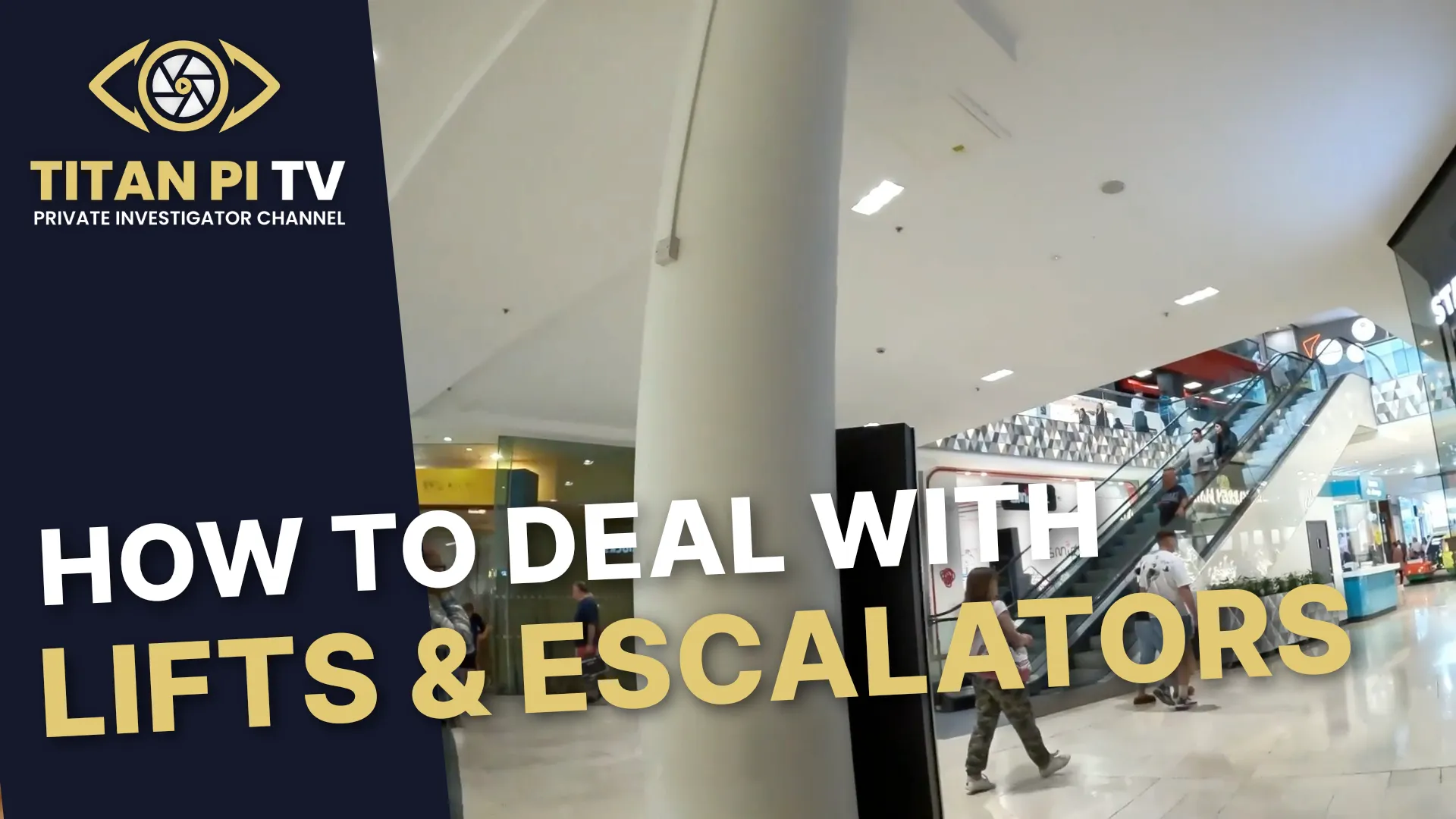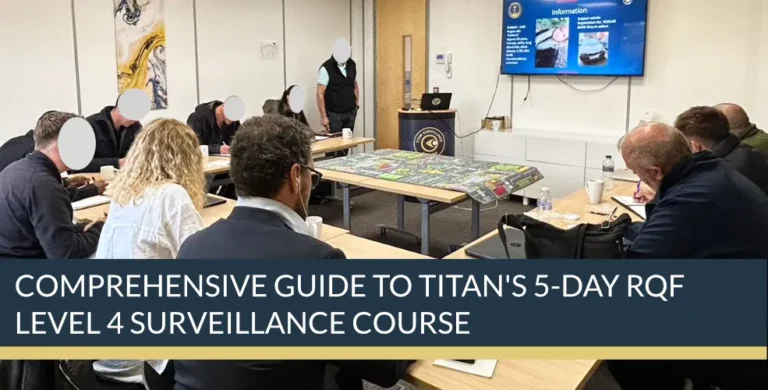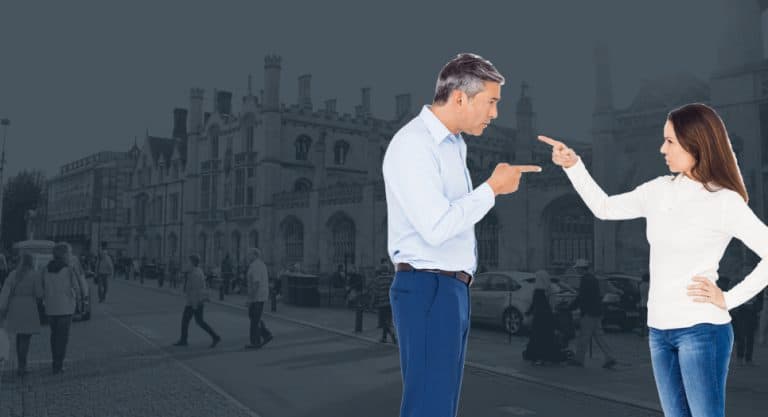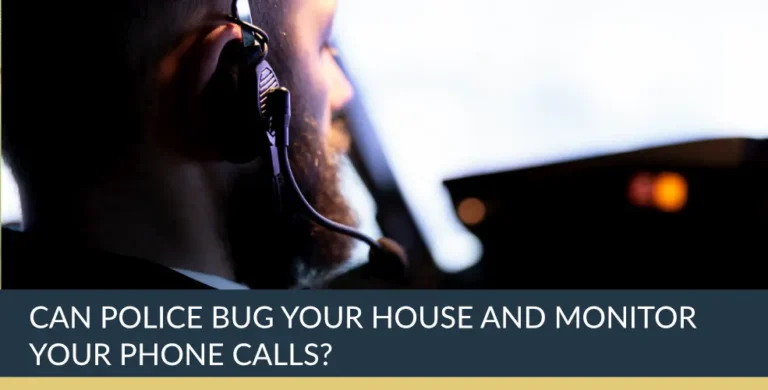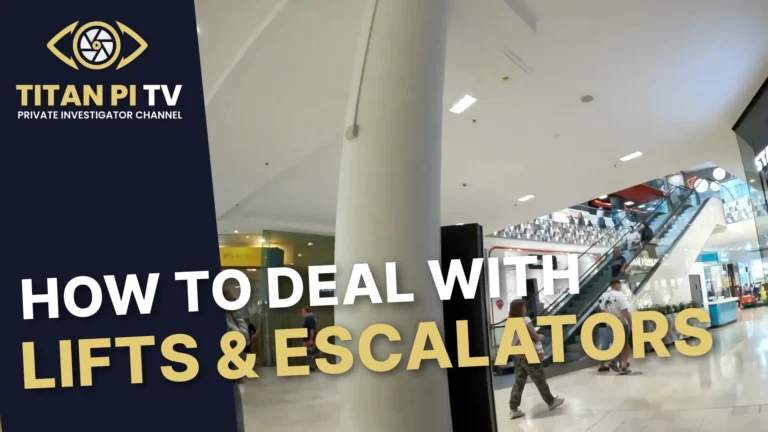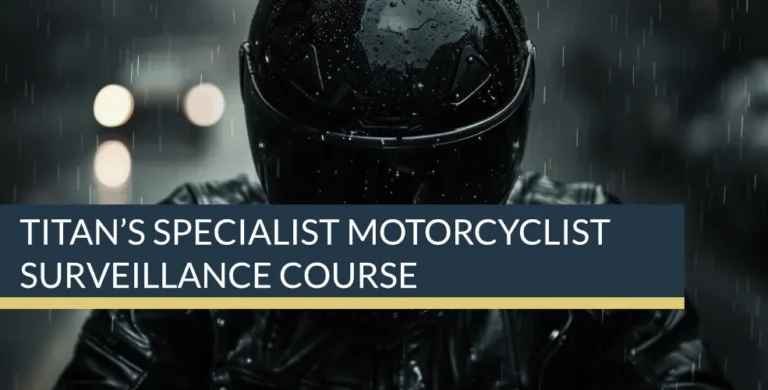Operational Techniques in Surveillance: Escalators and Lifts
Dealing with Escalators and Lifts on foot surveillance
In the world of private investigation, especially when operating in urban environments such as shopping centres, the mastery of spatial awareness and movement becomes a critical component of successful surveillance. These environments are often bustling with activity, filled with countless opportunities and obstacles that can either enhance or impede an investigator’s ability to remain covert. One of the greatest challenges faced in such spaces is the effective use of escalators and lifts. Navigating these everyday mechanisms requires a blend of tactical awareness, instinctive decision-making, and a deep understanding of human behaviour.
In this blog, we’ll explore the operational techniques employed by professional investigators, delving into the nuances of manoeuvring escalators and lifts, drawing insights from Titan Private Investigation’s most recent episode on this subject. These techniques can significantly increase the success rate of surveillance operations, particularly in complex environments like shopping malls or large department stores.
The Challenges of Urban Surveillance
Before diving into specific techniques, it’s important to understand the broader context in which these tactics are applied. Urban surveillance, especially in areas like shopping centres, presents investigators with a unique set of challenges. These environments are characterised by constant foot traffic, the presence of security cameras, limited sightlines, and potential obstacles such as escalators, lifts, and stairwells. They are also spaces where subjects may engage in unpredictable behaviours, such as frequent stops, entering and exiting shops quickly, or taking alternate routes to lose a potential follower.
One of the investigator’s main objectives in such environments is to maintain visual contact with the subject without being detected. The slightest misstep—whether by appearing too conspicuous or by losing track of the subject—can compromise the entire operation. This is why mastering operational techniques for navigating escalators and lifts is essential. These mechanisms, while convenient for the general public, can serve as both a blessing and a curse for surveillance professionals.
Analysing Escalator Engagement
Escalators are a common feature in large, multi-level retail environments, and they present both opportunities and challenges for investigators. The key to following a subject using an escalator lies in the timing, positioning, and awareness of the surroundings. Each decision must be made instinctively, based on the specific situation, the behaviour of the subject, and the environment at large.
Timing and Positioning
When a subject approaches an escalator, the investigator has several tactical choices, each with its pros and cons. Deciding when to step onto the escalator and how close to the subject to follow requires quick, instinctual thinking.
- Wait for the Top: One common approach is to allow the subject to reach the top (or bottom) of the escalator before following. This strategy allows the investigator to observe the subject’s activities once they disembark without the pressure of standing directly behind them. It also provides a momentary gap to reassess the situation from a different vantage point.
- Close Proximity: Another option is to follow closely behind the subject. This can be advantageous in a crowded environment, as the sheer number of people using the escalator may obscure the investigator from the subject’s view. However, the risk of detection is higher, as close proximity increases the chances of being noticed, especially if the subject is particularly observant or suspicious.
- Midpoint Entry: A more nuanced approach involves stepping onto the escalator when the subject is halfway up. This can create a sufficient gap to avoid detection while still allowing the investigator to maintain visual contact. The effectiveness of this strategy depends heavily on the investigator’s comfort level and the specific environment. For example, in quieter areas, this approach may appear more natural, whereas in busy shopping centres, it may require greater caution.
Maintaining Discretion
Regardless of the chosen technique, maintaining a natural appearance is critical. Subjects may not always be actively scanning for someone following them, but even the most inconspicuous investigator can be noticed if their behaviour seems out of place. Blending in with the crowd, appearing relaxed, and avoiding direct eye contact with the subject are key to reducing suspicion. Any hesitation or unnatural movement—such as abruptly changing course or entering the escalator too hurriedly—can raise red flags for an alert subject.
Use of Escalator Banks
In some shopping centres, escalators are arranged in banks, with multiple escalators running side by side or in opposite directions. This presents an opportunity for investigators to strategically position themselves on a different escalator, allowing them to observe the subject from a distance while maintaining the appearance of simply moving through the space. This technique can also provide an alternative escape route should the need arise to reposition quickly without following the subject too closely.
Navigating Lifts with Precision
Lifts present an even greater challenge than escalators due to their confined and enclosed nature. Once inside a lift, the opportunity for movement is severely limited, and the risk of detection increases exponentially. To navigate lifts effectively, an investigator must have a keen sense of timing and strategy.
Identifying the Right Lift
In large department stores or shopping centres, there are often multiple lifts serving different floors. The first challenge is identifying which lift the subject is using. Misidentifying the lift could result in the investigator losing visual contact altogether. Therefore, the investigator must be vigilant when the subject approaches a bank of lifts, noting which one they enter. Simple details—such as whether the subject enters the centre lift of three or the far-left lift of two—can make all the difference in maintaining a seamless operation.
Deciding Whether to Enter
The decision of whether to enter the lift with the subject depends on several factors:
- Presence of Other People: If the lift is crowded, it may be easier for the investigator to enter without drawing attention. In such cases, the investigator can blend in with other passengers, using the crowd as cover. However, if the lift is nearly empty, the risk of detection increases significantly.
- Subject’s Behaviour: If the subject appears anxious or suspicious, entering the lift with them could be risky. The investigator must gauge the situation and determine whether maintaining proximity is worth the potential risk of being detected. In some cases, it may be more prudent to wait for the next lift or to take the stairs, coordinating with team members on other floors.
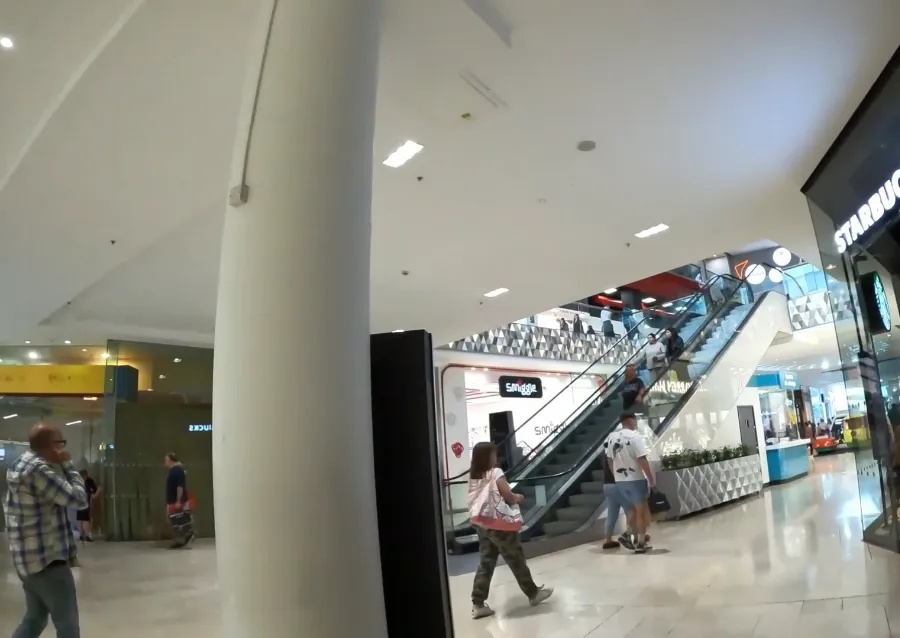
Communication and Coordination
Surveillance teams often work in tandem, with multiple investigators covering different parts of a building. When using lifts, effective communication is essential to ensure the subject is not lost between floors. For example, if the subject enters a lift and the investigator decides not to follow, they must quickly communicate this to team members positioned on other floors. By monitoring the lift’s movement via floor indicators, the team can track the subject’s progress and prepare for their arrival on the next level.
In situations where no team is available, the lone investigator must rely on their knowledge of the building’s layout, anticipating where the subject is likely to exit. Quick thinking and familiarity with the environment can help mitigate the risk of losing the subject during this critical transition phase.
Tactical Use of Lifts
In some cases, investigators can use lifts to their advantage by positioning themselves strategically on a higher or lower floor. For example, if the investigator anticipates the subject will be using the lift frequently, they can ride a separate lift to a different floor, ensuring they are in the right place at the right time without arousing suspicion.
Practical Application in a Shopping Centre
To illustrate these principles, let’s consider a real-world example in a department store like Marks & Spencer:
- Team Coordination: The lead investigator enters the store and quickly informs their team members to position themselves on different floors, ensuring coverage of all possible exit points.
- Lift Observation: As the subject approaches a bank of lifts, the investigator notes which lift the subject enters and communicates this information to the team, who monitor the lift’s progress on the floor indicators.
- Escalator Follow-Up: When the subject uses an escalator, the investigator waits for the subject to disembark before communicating their location to the team. This ensures that unnecessary movement is avoided and the operation remains covert.
- Anticipation and Adaptation: Throughout the surveillance, the team remains flexible, adapting their tactics based on the subject’s behaviour and the environment.
Conclusion
In the fast-paced and unpredictable world of private investigation, mastering the use of escalators and lifts is an invaluable skill. Whether navigating crowded shopping centres or quiet department stores, investigators must rely on a combination of timing, positioning, and instinctive decision-making to remain undetected. By employing these operational techniques, investigators can significantly enhance their effectiveness in surveillance operations, ensuring they stay one step ahead of their subjects.
For more insights and practical tips on the art of surveillance, tune into the Titan Pi TV podcast, where experts delve into the latest strategies and share their experiences in the field.
Dealing with Escalators and Lifts find out more
For further advice and information about advanced Foot Surveillance techniques and Titan’s surveillance training courses, then please feel free to speak to one of our professional team at one of the offices nearest to you.
London Foot Surveillance Training – Call the Titan Investigations London Office 020 39046622
Birmingham Foot Surveillance Training – Call the Titan Investigations Birmingham Office 0121 7162442
Cambridge Foot Surveillance Training – Call the Titan Investigations Cambridge Office 01223 662022
Derby Foot Surveillance Training – Call the Titan Investigations Derby (Head Office) 01332 504256
Leeds Foot Surveillance Training – Call the Titan Investigations Leeds Office 0113 4574066
Leicester Foot Surveillance Training – Call the Titan Investigations Leicester Office 0116 2436520
Nottingham Foot Surveillance Training – Call the Titan Investigations Nottingham Office 0115 9646950
Manchester Foot Surveillance Training – Call the Titan Investigations Office 0161 3023008
Sheffield Foot Surveillance Training – Call the Titan Investigations Sheffield Office 0114 3499400
Truro Foot Surveillance Training – Call the Titan Investigations Truro Office 01872 888706
Alternatively, you can contact us directly using our fully confidential contact form at enquiries@titaninvestigations.co.uk or chat directly using our Live Chat facility and one of our surveillance training course team will get right back to you.

